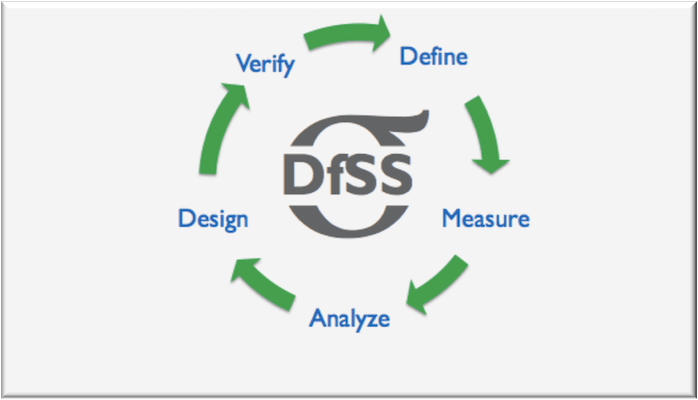The need for both KPIs and OKRs
Headline: “Business Metrics Gone Awry: The Dark Side of Relying Solely on KPIs”
Subheading: “Corporate Missteps Highlight the Pitfalls of Blindly Chasing Key Performance Indicators”
We read about it all the time; in a shocking turn of events, the business world is abuzz with meteoric fall of some company and its CEO, its CFO, or both. It is the story of a once-thriving company (or industry, or even country) whose relentless pursuit of Key Performance Indicators (KPIs) led to its ultimate undoing.
And although the story serves as a stark reminder that relying solely on metrics to run a business can have serious consequences, it seems the lessons are never made pervasive as the story gets reconstituted and retold time and again.
Usually, the CEO had been the poster child for success, flaunting impressive KPIs that dazzled shareholders and competitors alike. However, behind the scenes, the company’s commitment to meeting and exceeding targets was taking a dark turn.
Eventually, such relentless pursuit of making the numbers and the predictability with which it happens starts to attract unwanted attention. Perhaps a disgruntled employee or whistleblower reveals that the success story was built on a foundation of manipulated KPIs. Perhaps revenue figures were artificially inflated, customer satisfaction scores were doctored, credit ratings were built on falsehoods, employee productivity metrics were tampered with to maintain an illusion of prosperity, and so on.
The revelation sends shockwaves through the industry (perhaps even reaching the halls of government), prompting questions about the integrity of relying solely on KPIs to assess a company’s health. It becomes clear that the obsessive pursuit of metrics has created a toxic corporate culture; where employees were pressured to meet targets at any cost.
The consequences for the company (even an economy) are as severe as they are swift. Legal ramifications loom large, shareholder trust is shattered, and the company’s once-pristine reputation is tarnished if not crushed. The fallout serves as a chilling reminder that the misuse of KPIs can lead to serious problems, not only for the company at the epicenter, but also for the entire business community; even a world economy.
Blindly and solely chasing KPIs can (will?) lead to corruption and result in a myopic perspective that neglects the broader aspects of sustainable success. To paraphrase Mark Twain; “KPI’s, like Politicians, are a lot like diapers. They should be changed frequently, and for the same reasons.”
But what can be done?

Industry experts now emphasize the need for a multi-faceted and balanced approach to business management; advocating for a mix of metrics, ethical practices, and a genuine focus on the well-being of employees and customers.
To this end, and since they are closely related but very different and create a balance, I am going to compare and contrast Key Performance Indicators (KPI’s) and Objectives and Key Results (OKR’s), and share some thoughts on why using both to monitor and manage the health of your business is important.
A Key Performance Indicator is a measurable value that indicates how well an organization, business unit, project, or individual is achieving its objectives. KPIs are used to evaluate the success of an entity in reaching its strategic goals and are critical in assessing performance over time.
Here are some key characteristics of KPIs:
- Relevance: KPIs should be directly tied to the specific goals and objectives of the organization or project. They measure critical aspects that align with strategic priorities.
- Measurability: KPIs must be quantifiable and measurable. This allows for the collection of data over time to track performance and assess progress toward goals.
- Specificity: KPIs should be clear and well-defined, leaving no room for ambiguity. This clarity ensures that everyone understands what is being measured and how success is determined.
- Timeliness: KPIs are often associated with specific time frames. They may be measured daily, monthly, quarterly, or annually, depending on the nature of the metric and the goals being assessed.
- Actionability: KPIs should provide information that can lead to actionable insights. If a KPI indicates a performance issue, it should prompt the organization to take corrective actions to improve results.
- Variability: KPIs should have the potential to change over time. This variability allows organizations to adapt and evolve as they respond to changing circumstances and priorities.
Examples of KPIs can vary widely depending on the context but may include financial metrics (such as revenue growth or profit margins), customer satisfaction scores, employee productivity, project completion rates, and more. The selection of KPIs depends on the specific goals and objectives of the entity being measured.
Effectively using KPIs can help organizations track progress, identify areas for improvement, and make informed decisions to enhance overall performance.
And Objectives and Key Results is a goal-setting framework that helps organizations define and track objectives, along with the measurable outcomes that indicate progress toward those objectives. OKRs are widely used in businesses, startups, and other organizations to align teams, set priorities, and drive performance.
Here is a breakdown of the two components of OKRs:
- Objectives:
- Objectives are clear, concise, and inspiring statements that outline what an organization, team, or individual aims to achieve. Objectives are meant to be ambitious and provide direction. They answer the question, “What do we want to accomplish?”
- Key Results:
- Key Results are specific, measurable outcomes that indicate the achievement of an objective. They are quantifiable and time-bound, providing a way to objectively measure progress. Key Results answer the question, “How will we know when the objective is achieved?”
The structure of OKRs is hierarchical, with company-level objectives often cascading down to departmental and individual levels. This alignment ensures that everyone is working toward common goals that contribute to the overall success of the organization.
Some key characteristics of OKRs include:
- Transparency: OKRs are typically visible and accessible to everyone within the organization. This transparency helps in fostering a shared understanding of goals and priorities.
- Alignment: OKRs encourage alignment between different levels of the organization. The objectives of individual teams and employees should support the achievement of higher-level organizational objectives.
- Regular Check-Ins: OKRs are often set for specific time frames (e.g., quarterly), and regular check-ins are conducted to review progress, discuss challenges, and make adjustments as needed.
- Continuous Improvement: OKRs promote a culture of continuous improvement by setting stretch goals and encouraging learning from both successes and failures.
- Adaptability: OKRs are flexible and can be adjusted as business priorities evolve. This adaptability allows organizations to stay responsive to changing market conditions and strategic shifts.
Notable companies like Google and Intel have been known to adopt and popularize the OKR framework. Overall, OKRs provide a systematic approach to goal-setting and performance management, helping organizations focus on what truly matters and achieve measurable results.
Key Performance Indicators (KPIs) and Objectives and Key Results (OKRs) are both performance management tools, but they have distinct differences in terms of focus, structure, and application. Here are the key differences between KPIs and OKRs:
1. Focus:
- KPIs: Focus on measuring the overall performance of an organization, team, or individual. KPIs are often used to assess how well strategic goals are being achieved and may cover a wide range of performance areas.
- OKRs: Focus on setting and achieving specific objectives within a defined timeframe. OKRs are more goal-oriented and are designed to drive performance by setting clear and measurable targets.
2. Nature of Measurement:
- KPIs: Often represent ongoing, continuous metrics that are critical to the ongoing success of an organization. Examples include financial metrics, customer satisfaction scores, and employee turnover rates.
- OKRs: Are time-bound and are typically associated with specific, short-term objectives. They have a specific endpoint and are reset periodically (e.g., quarterly or annually).
3. Structure:
- KPIs: Are often singular metrics that provide a snapshot of performance in a specific area. They are more static and may not change frequently.
- OKRs: Consist of two components—Objectives and Key Results. Objectives articulate what needs to be achieved, and Key Results specify measurable outcomes that indicate success. OKRs are designed to be dynamic and adaptable, encouraging regular reassessment and adjustment.
4. Alignment and Cascading:
- KPIs: Are typically set at the organizational level and may not cascade down to lower levels. Alignment may not be as explicit.
- OKRs: Are designed for alignment and cascading. Company-level objectives can cascade down to team and individual levels, ensuring that everyone is working towards common goals.
5. Flexibility and Ambition:
- KPIs: Tend to be more stable and may not change frequently. They are often established to monitor ongoing business functions.
- OKRs: Encourage a more flexible and ambitious approach. Objectives are meant to be aspirational and may be adjusted more frequently to reflect changing priorities.
6. Cultural Emphasis:
- KPIs: Often associated with performance monitoring and accountability.
- OKRs: Emphasize a more collaborative and aspirational culture, encouraging innovation, learning, and adaptability.
So, while both KPIs and OKRs are valuable tools for performance management, they serve different purposes. KPIs provide ongoing metrics for monitoring overall performance, while OKRs are goal-setting frameworks designed to drive specific, measurable outcomes within defined timeframes. Some organizations use a combination of to create a comprehensive performance management strategy.
Thinking of it another way, KPI’s are like your business report card. They tell you how well you are doing in hitting your goals. Keep these KPIs in check, and you will know if you’re on the right track. And OKRs are like your battle plan for the year. The Objectives are your big, ambitious goals, and Key Results are the checkpoints along the way. Simply put, KPIs keep you on track day-to-day, and OKRs are your big goals to which you align the efforts throughout your organization.
About the Author
Paris is an international expert in the field of Operational Excellence, organizational design, strategy design and deployment, and helping companies become high-performance organizations. His vehicles for change include being the Founder of; the XONITEK Group of Companies; the Operational Excellence Society; and the Readiness Institute.
He is a sought-after speaker and lecturer and his book, “State of Readiness” has been endorsed by senior leaders at some of the most respected companies in the world.
Click here to learn more about Joseph Paris or connect with him on LinkedIn.







